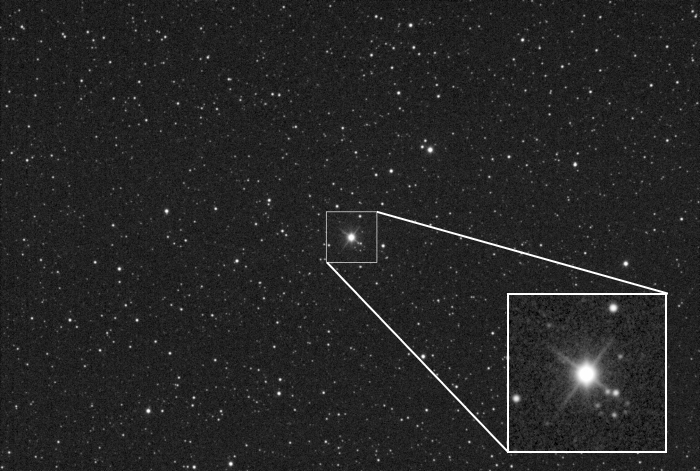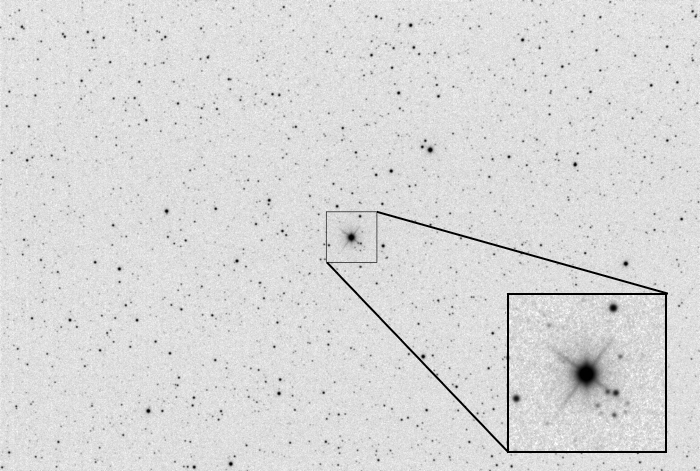
Supernovae represent the violent explosions of massive stars which have reached the end of their life-cycle. These massive explosions where the
bulk of a star's material is ejected into space and the interstellar medium are characterized with luminosities which easily can exceed that of
the host galaxy for a brief period of a few weeks or even months. This ejection of material including heavy elements is both vital and critical
for new generations of stars and exoplanets.
Supernovae are classified into one of two primary types. White dwarfs which gain matter via accretion have their cores collapse once they approach
the Chandrasekhar limit of 1.38 solar masses, thus yielding a Type Ia supernova. Accretion of matter can be accomplished by a variety of means
including via a close binary star companion or a merger with another white dwarf. In contrast, type Ib and Ic involve large stars which have
exhausted their available fuel and collapse due to gravity. Type II supernovae involve much more massive stars (at least nine solar masses) where
the nuclear fusion follows a steady path from lighter to progressively heavier elements (such as hydrogen to helium which is then converted to
carbon etc) and until nuclear fusion is no longer possible at the core due to the iron and nickel that has been accumulated, thus leading to a huge
core collapse and an ensuing stellar explosion.
Spectroscopy has also played a key role in identifying the type of supernova one observes and, in fact, now forms the basis for their classification.
More specifically, type Ia supernovae are characterized without any hydrogen emission lines in their spectra and in contrast to type II which exhibit
strong hydrogen emission lines. Furthermore, type I are further subdivided on the basis of the presence of a silicon line (615nm, type Ia), a helium
line (type Ib) or neither one (type Ic) in their spectra.
Many supernovae leave behind them spectacular gas clouds and stellar remnants (neutrinos) which cover multiple full moons in width across the sky.
Regrettably, for residents of the northern hemisphere, only four supernova remnants (SNR) are visible and, more specifically, the Crab Nebula (M1)
in Taurus, the massive Veil complex (NGC 6960, 6974, 6979, 6992, 6995) in Cygnus, the Jellyfish Nebula (IC 433) in Gemini and Simeis 147 (aka Shajn
147, Sh 2-240) also in Taurus. The most recognized supernova remnant is perhaps the Crab nebula in Taurus which is believed to have exploded in
1054 AD as documented by Chinese astronomers of the time whereas Simeis 147 is especially dim and represents one of the faintest objects in the sky.
In contrast to supernovae where the star is ultimately destroyed, novae represent precisely the opposite scenario where the explosions involved and
the consequent release of matter into space involve the (white dwarf) star remaining intact. Once enough material has been accredited from a nearby
companion red dwarf, one will observe a new explosion and outburst. Some of the brightest novae observed during the past one hundred years or so are
available here.
Note: For the CBAT announcement involving Nova Delphini 2013, click
here whereas spectroscopic details are available
here and
here.
Further details from the International Variable Star Index are available
here whereas an AAVSO finder chart is available
here.
For the latest AAVSO light curve and associated observations, click
here.
Note: Differential photometry yields a magnitude estimate of 6.08 + 0.01 using SAO 88610 (mag 8.043 (V) as per
GSC-ACT) for the reference star and SAO 88584 as the check star for August 15.0111 UT. Nova Delphini 2013 reached a maximum magnitude of 4.3
approximately on August 16.45 UT (further details here).
|
Designation: V339 Del, Nova Delphini 2013 RA / Dec: 20h 23m 30.73s / +20° 46' 04.1" Constellation: Delphinus Magnitude: 6.3 (U) Type: H-a / CO Discovery Date: 2013/08/14.5843 |
 
|
Date: Aug 15, 2013 03:14 - 03:18 UT+3 Location: Athens, Greece Equipment: AP 305/f3.8 Riccardi-Honders AP 1200GTO GEM SBIG ST-10XME SBIG CFW10 SBIG LRGB CCD filters Integrations:
Image Scale: 1.21" per pixel Temperatures:
Software: CCDSoft V5.00.201 CCDStack V1.6.0.5 Photoshop CS6 |